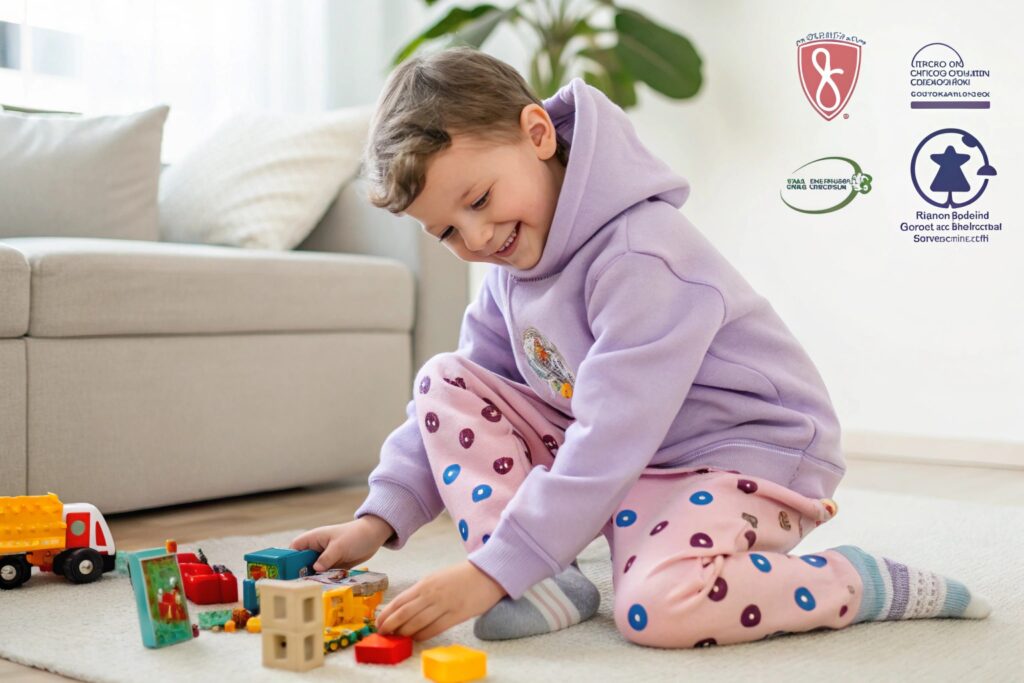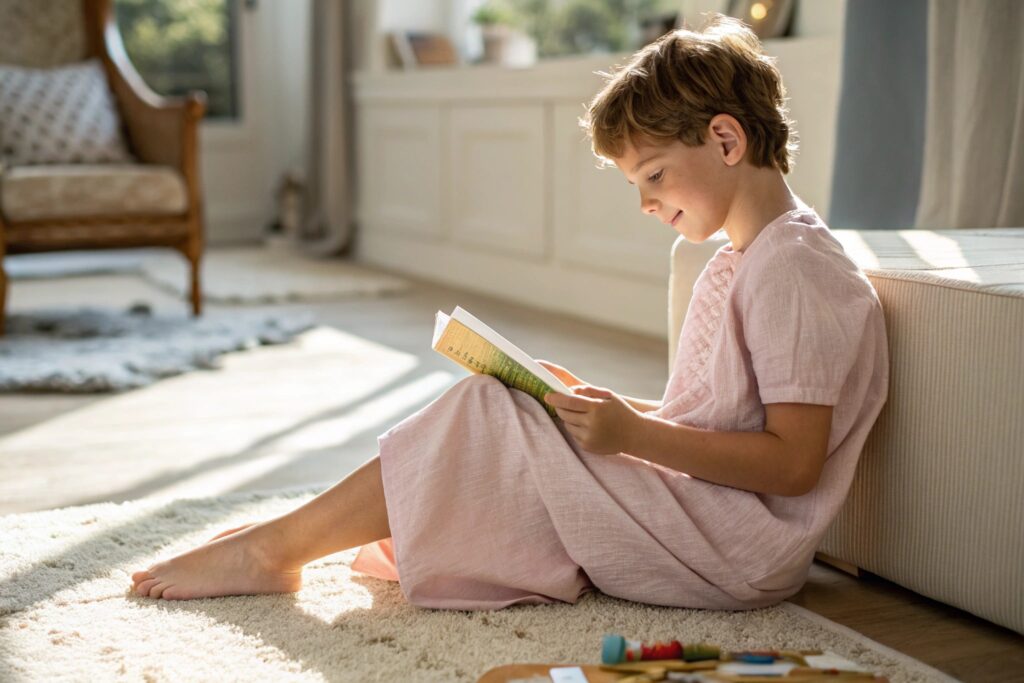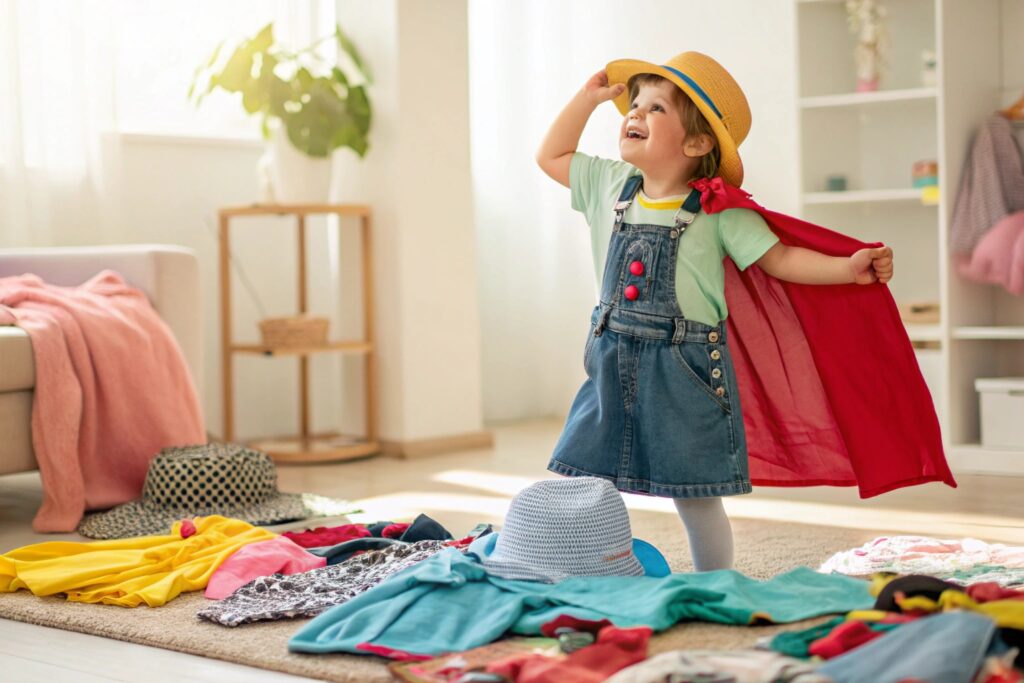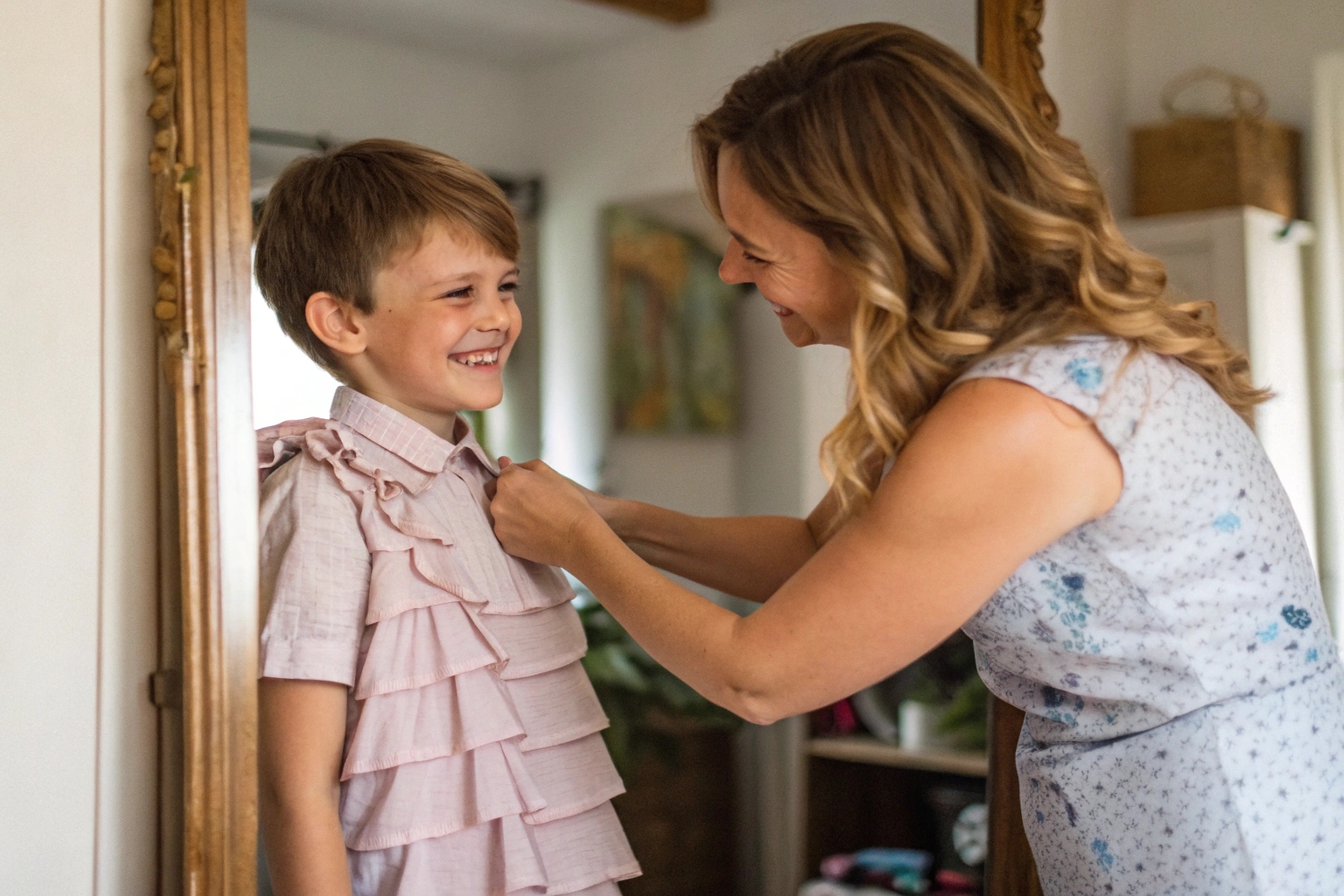It might surprise you to see a young boy twirling in a sparkly dress, but this is becoming more common—and more accepted—among thoughtful, progressive parents.
Some mothers dress their sons in girls' dresses to encourage freedom, creativity, and gender expression without judgment or limits.
If you're curious about the reasons behind this choice, you'll find answers grounded in psychology, parenting values, and changing cultural norms.
Is Gender-Neutral Fashion Right for Boys?
For decades, children's clothing has been split by color, style, and label. But those boundaries are fading fast, especially among modern families raising open-minded kids.
Yes, gender-neutral fashion helps boys explore comfort, color, and creativity—without being boxed into outdated masculine roles.

How do traditional boy’s clothes limit expression and comfort compared to more flexible styles?
Standard boys’ clothes tend to favor dark colors, boxy shapes, and rugged themes. While there's nothing wrong with dinosaurs or camouflage, boys who want bright colors, soft fabrics, or flowing movement might find their choices limited. Dresses offer lightness, freedom of motion, and variety—qualities not exclusive to girls.
Take the example of a 4-year-old boy who wants to dance, paint, or pretend he's a fairy. A frilly dress might make those experiences more exciting and real. Many mothers notice that when boys are given more diverse clothing options, their creativity expands, and tantrums over clothing disappear.
Gender-neutral fashion doesn't mean boys wear dresses every day. It means the dress is an option—just like jeans or sweatpants.
What role do clothes play in helping children feel seen and respected?
When a child asks for a pink shirt or a sparkly skirt and is told “no, that’s for girls,” it sends a message: some things are off-limits just because of gender. That restriction doesn’t only limit style—it can also hurt self-esteem.
Giving boys access to gender-neutral or traditionally “feminine” clothes shows that their preferences are valid. It tells them they are free to be themselves, to be soft or bold, silly or serious. This early support creates stronger emotional security and better parent-child trust.
Here’s a comparison:
| Attribute | Traditional Boyswear | Gender-Neutral Options |
|---|---|---|
| Color Range | Mostly dark or muted | Full spectrum, including pastels |
| Movement | Often stiff or heavy | Light, flexible, flowy |
| Creative Play | Limited visual appeal | Stimulates imagination |
| Emotional Signal | "Be tough" | "Be yourself" |
Breaking Stereotypes in Kids’ Clothing Choices
We’ve all seen the labels: “Boys will be boys,” “Tough like dad,” or “Little princess.” But who decided those roles—and should we keep following them?
Allowing kids to choose across traditional clothing lines helps break outdated stereotypes and supports more inclusive, flexible childhood development.

Why is it important to challenge gender stereotypes in children's fashion from a young age?
Children start forming ideas about gender roles as early as age 2. When they constantly see pink = girl and blue = boy, they begin to associate identity with rules. That creates shame when they like something "for the other gender."
For boys especially, the pressure to be “masculine” starts early. They may be told not to cry, avoid pink, or hide their feelings. When they’re allowed to wear dresses or choose “girly” items without punishment, it opens a door to healthier emotional development.
Parents who challenge these stereotypes are not forcing change—they’re giving freedom. They say: “You can wear what feels right to you.” That empowers children to think critically, value self-expression, and respect differences.
How does this clothing freedom impact how children treat others?
When kids grow up in a home that accepts clothing diversity, they tend to become more accepting in general. They see that everyone deserves choice—regardless of labels. This reduces bullying, encourages kindness, and builds empathy.
I've seen this in action. A mother once told me her son wore a dress to a costume party and received a mix of reactions. Instead of backing down, she explained that he was simply having fun. The next day, a classmate brought in a rainbow cape and said, “I want to sparkle too.” That’s how change begins—one outfit at a time.
A quick summary:
| Stereotype | Clothing Message |
|---|---|
| Boys shouldn’t wear pink | Pink is just a color |
| Dresses = femininity | Dresses = comfort, creativity |
| Fashion defines gender | Fashion explores personality |
| Conformity is safety | Diversity is strength |
Why Some Parents Choose Feminine Styles for Sons?
It’s not always about gender identity. Sometimes, it’s just about joy, softness, or practicality. Parents often choose dresses for reasons that go beyond the obvious.
Many mothers dress their sons in feminine styles to encourage open-mindedness, comfort, and body awareness—not necessarily to make a political statement.

What practical or emotional reasons lead parents to choose dresses or skirts for boys?
Softness, airflow, and playfulness. These are some of the most common reasons. Parents notice their sons are more physically comfortable in flowing clothing—especially in warmer climates. Dresses don’t bind the waist or restrict legs. For toddlers learning to walk or crawl, less bulk means more movement.
Other reasons are emotional. A dress might feel special, twirl beautifully, or mirror what their sister is wearing. That sense of connection and imitation is part of social development. It doesn’t “turn” a boy into anything—it simply reflects his interests at that moment.
And then there’s confidence. When a boy is allowed to wear what he chooses, and is met with smiles instead of shame, he feels braver. He learns to trust his voice—even when it’s not popular.
Are these parents trying to raise their sons as girls?
No. Most parents who dress their sons in feminine clothing are not trying to change their gender. They’re simply letting their children explore, feel joy, and be themselves. For many kids, a dress is no more meaningful than a superhero cape or pirate hat—it’s part of play.
This approach creates stronger communication. Kids learn that their parents are safe, honest, and loving, no matter what. That emotional foundation is more valuable than any piece of fabric.
Key motivations:
| Reason | Parent Perspective |
|---|---|
| Comfort | Dresses are breathable and non-restrictive |
| Joy | Kids enjoy twirling, softness, and sparkle |
| Equality | If sisters wear dresses, why can’t brothers? |
| Curiosity | Kids explore identity through style |
How Clothing Shapes Identity in Early Childhood?
More than just covering the body, clothes are one of a child’s first tools for expression. What they wear teaches them who they are—and what they’re allowed to be.
Yes, clothing shapes early identity by giving children a canvas for self-expression, emotional safety, and social learning.

How does early exposure to diverse clothing options influence a child’s sense of self?
During the toddler and preschool years, kids begin exploring their likes and dislikes. Clothing is one of the few things they can control. Whether it's choosing between two shirts or picking out shoes, they learn autonomy through fashion.
When boys are allowed to wear dresses—or at least try them—they learn that preferences are personal, not prescribed. This helps them form a sense of identity that’s resilient and honest. They understand that being “a boy” doesn’t mean avoiding softness or color.
This also protects them from shame. A boy who never experiences freedom in clothing might grow into a man who hides parts of himself. But one who is nurtured and supported can grow into someone who accepts himself and others.
What are the long-term benefits of allowing kids to experiment with clothing freely?
Kids who are trusted with choices become teens who make thoughtful decisions. They understand risk, respect others, and resist peer pressure. Clothing experimentation teaches:
- Critical thinking (“Why can’t boys wear pink?”)
- Emotional intelligence (“This makes me feel happy.”)
- Courage (“I’m wearing this because I want to.”)
These are lessons that last longer than any outfit.
Final notes:
| Benefit | Long-Term Impact |
|---|---|
| Autonomy | Builds confidence and self-trust |
| Emotional Safety | Reduces shame, increases connection |
| Identity Formation | Supports individuality |
| Social Awareness | Encourages inclusion and empathy |
Conclusion
Some mothers dress their sons in girls' dresses to support self-expression, challenge limits, and nurture confidence. Clothing can be a tool—not a trap—for identity, joy, and connection.










